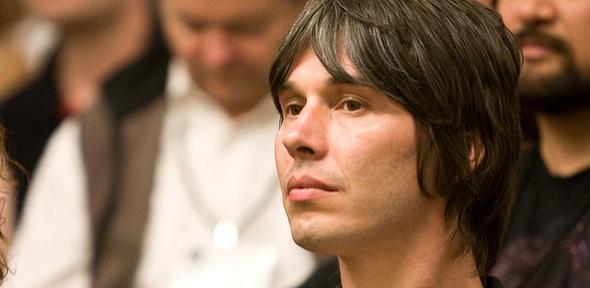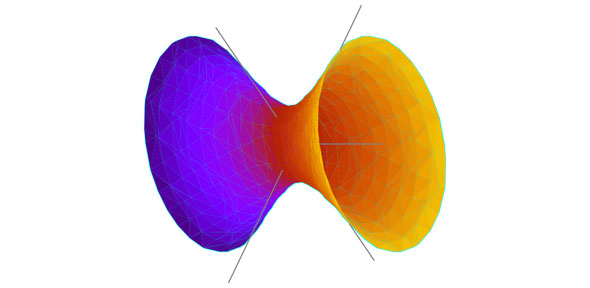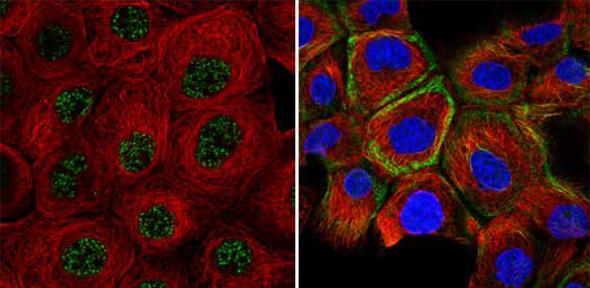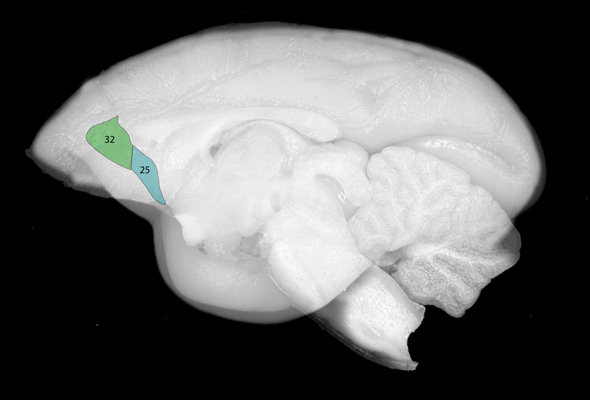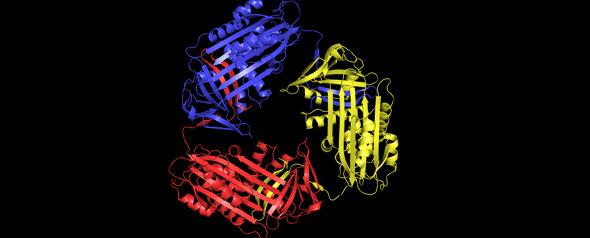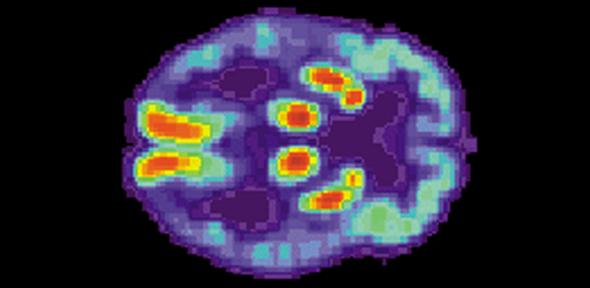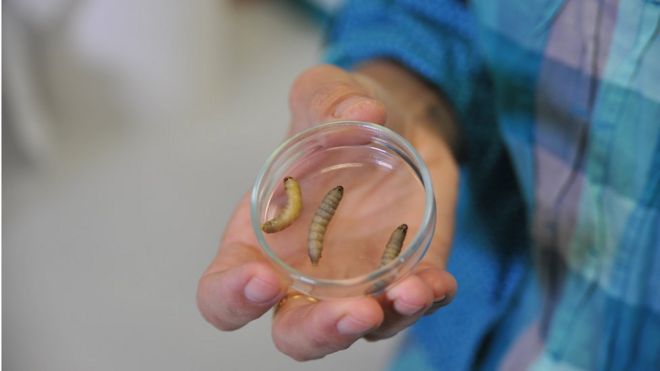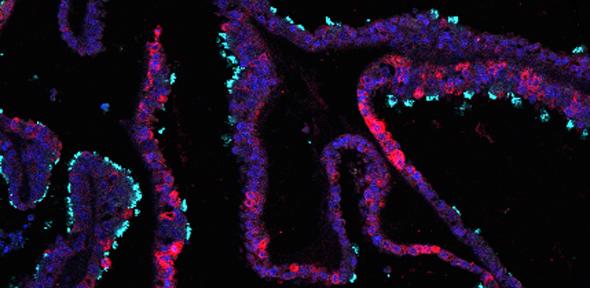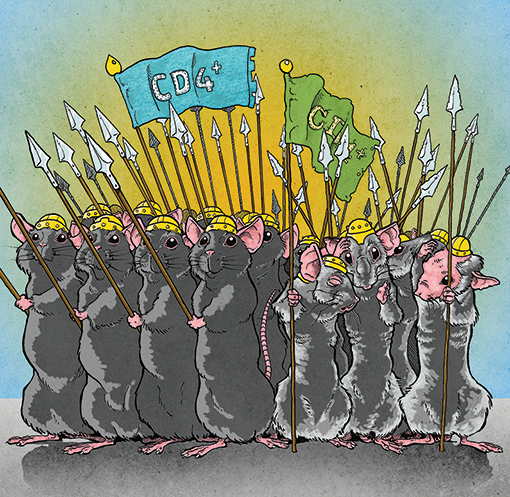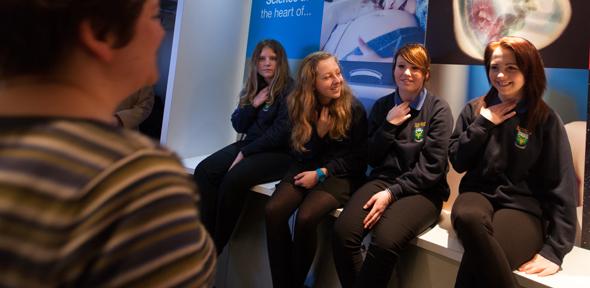Speed of animal evolution enhanced by cooperative behaviour
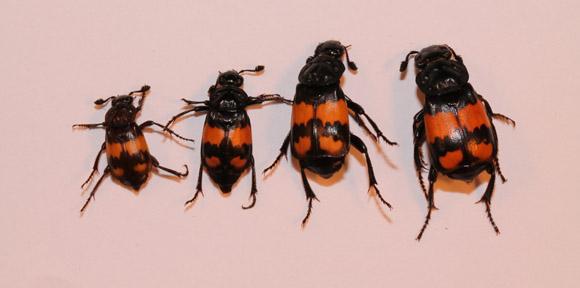
A study by scientists from the University of Cambridge has revealed how cooperative behaviour between insect family members changes how rapidly body size evolves – with the speed of evolution increasing when individual animals help one another.
In some populations, we allowed parents to help their offspring, but in other populations we removed the parents.
Benjamin Jarrett
Cooperative behaviour is a key part of animal family life: parents help offspring by supplying them with food, and siblings can also work together to acquire food. The Cambridge study, published today in Nature Ecology and Evolution, looked at the burying beetle – unusual in the insect world as the parents feed their offspring.
Larvae in small broods are well supplied with food by their parents and grow large. In the parents’ absence, larvae can also help each other to forage for food. However, in the absence of their parents, small broods of larvae are less effective at helping each other and can never grow as big.
“For our study, we played the role of natural selection. In some experimental beetle populations, we chose only the largest beetles to breed at each generation and in some we chose only the smallest beetles,” said Benjamin Jarrett from the Department of Zoology at the University of Cambridge, who led the study.
“Crucially, we also changed the social conditions within beetle families. In some populations, we allowed parents to help their offspring, but in other populations we removed the parents, and larvae had to help each other. We found that the social conditions made a big difference to how quickly beetle body size evolves over generations.”
Beetles only evolved a larger body size when parents were present to help rear their young. In stark contrast, smaller body size only evolved when beetle parents were removed, and there were too few larvae to help each other.
The experiment helps explain how different species of burying beetle might have evolved their different body sizes. In general, larger species of beetle have more diligent parents than smaller species.
Burying beetles use the dead body of a small animal, like a mouse or bird, for reproduction. The parents shave and bury the carcass, to make it into an edible nest for their larvae. The larvae can feed themselves on the carrion, but the parent beetles also regurgitate partly digested food to them. The species used in this study has quite variable levels of parental care: occasionally larvae have to fend for themselves on the carcass because they have been abandoned by their parents.
“Previous work has focused on the puzzle of how cooperative behaviour evolves, because natural selection seems to favour animals that are selfish,” said Professor Rebecca Kilner, who is senior author of this paper. “We have shown that what happens next, in evolutionary terms, is just as interesting. Once cooperation has evolved, it can change the way in which evolution then unfolds.”
The researchers now hope to uses experimental evolution to understand what happens across many generations when changing the extent of parental care.
“We can remove parents from caring for their offspring in one generation, and we do this to their offspring too, and their grandoffspring, and so on,” added Jarrett. “We currently have populations of beetles that have not had parents looking after them as they grow up for 25 generations.
“What this does is change what evolution is working on. Natural selection is usually acting on the combination of parents and offspring, and now, by removing parents, we have changed the traits on which evolution acts.”
The paper Cooperative interactions within the family enhance the capacity for evolutionary change in body size, published in Nature Ecology and Evolution, can be found here: http://dx.doi.org/10.1038/241559-017-0178

The text in this work is licensed under a Creative Commons Attribution 4.0 International License. For image use please see separate credits above.




